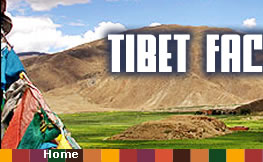|
|
Appendix-1 Administrative Division
|
|
|
|
|
Appendix-3 Natural Resources
|
|
|
| Tibet has abundant land resources. Of its total area of 1.2 million square km, 650,000 hectares are pastureland, accounting for 53.79 percent of the total, and 360,000 hectares are cultivated land, accounting for 0.3 percent. Most of the cultivated land is distributed in the southern Tibetan river valleys and basins, while the remaining small portions are scattered in the east and southeast of the region. A large proportion of land, or some 30.71 percent of the total, is yet to be utilized. As the largest grasslands, Tibet leads Inner Mongolia and Xinjiang in terms of the area of natural grasslands. |
| More |
|
|
|
|
|
|
|
Appendix-5 Tibetan Buddhism
|
|
|
Appendix-6 The Agreement of the Central People's Government and the Local Government of Tibet on Measures for the Peaceful Liberation of Tibet
|
|
|
|
|





